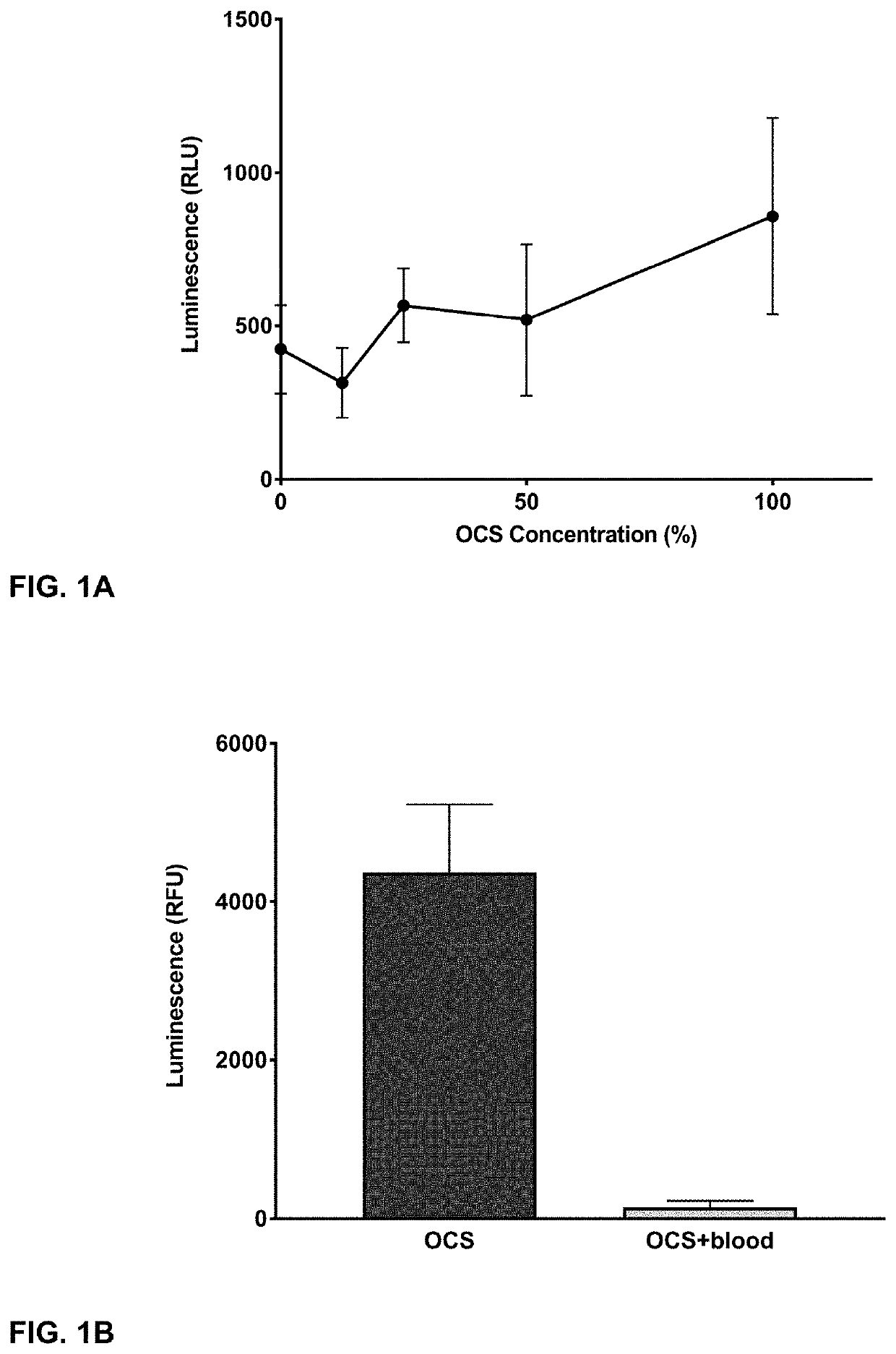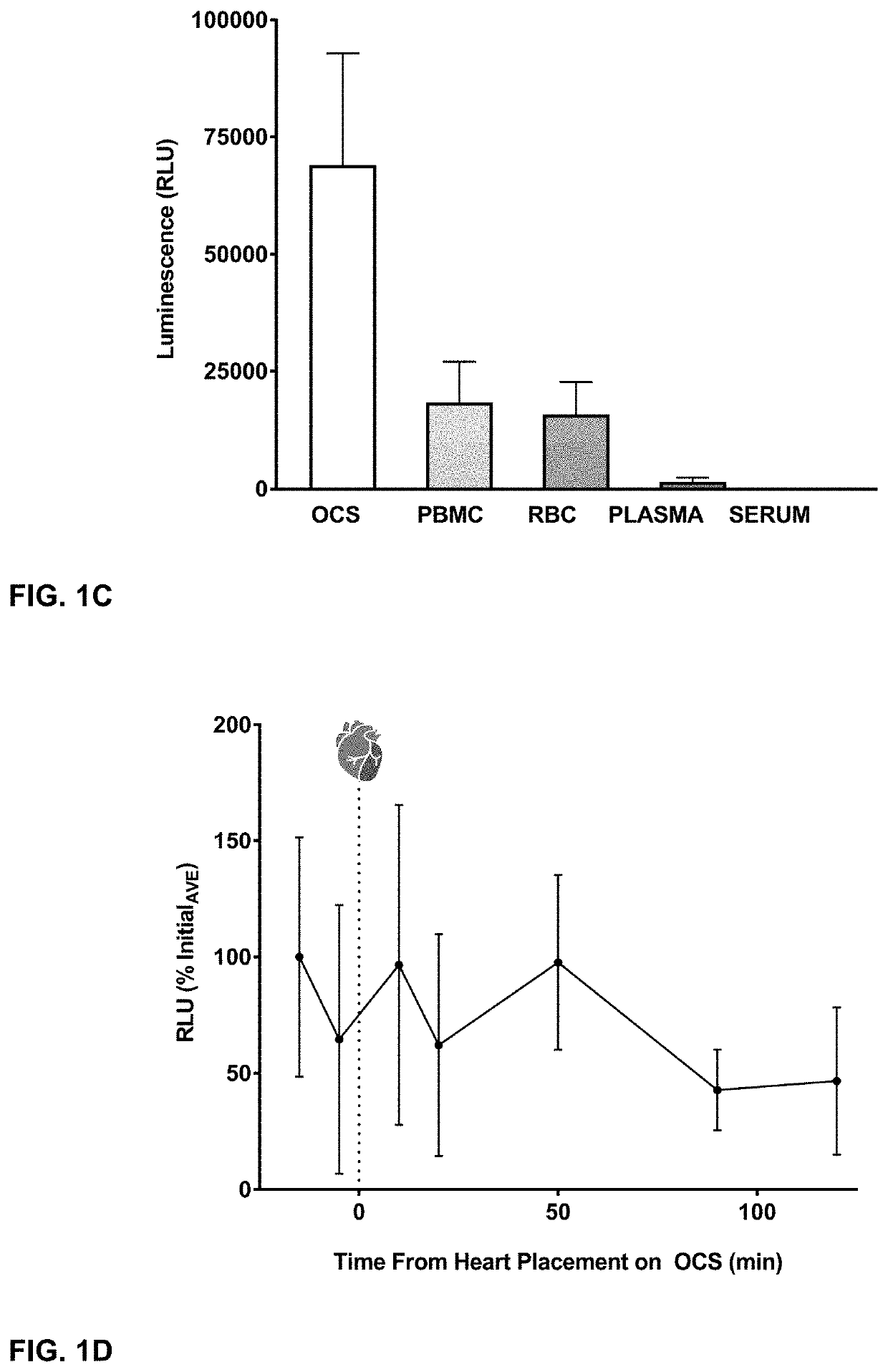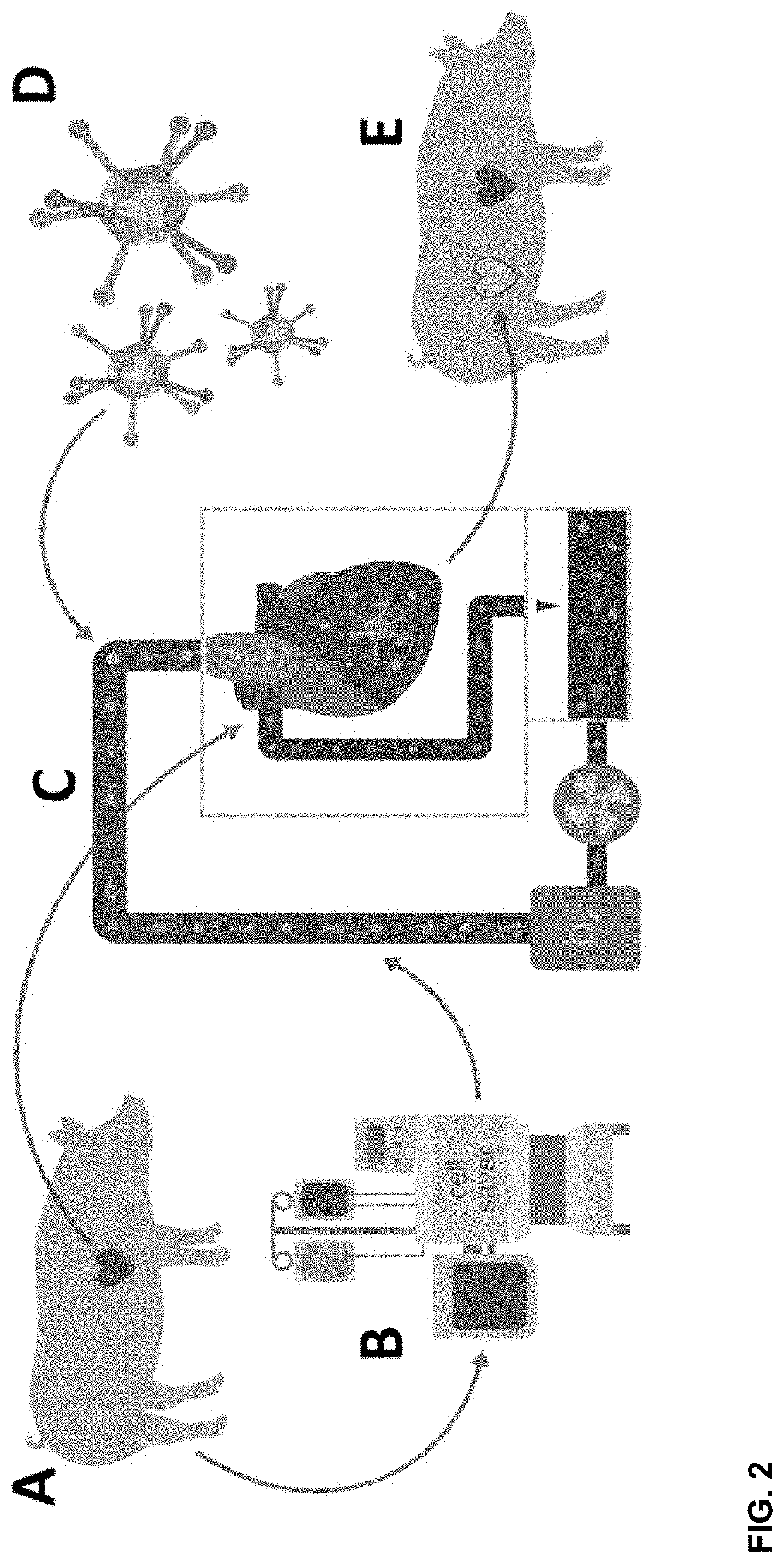Methods for the Delivery of Therapeutic Agents to Donor Organs
a technology of therapeutic agents and donor organs, applied in the direction of dsdna viruses, viruses/bacteriophages, active genetic ingredients, etc., can solve the problems of limited therapeutic options, limited organ supply, and the majority of the myocardium of a human heart size cannot be affected
- Summary
- Abstract
- Description
- Claims
- Application Information
AI Technical Summary
Benefits of technology
Problems solved by technology
Method used
Image
Examples
example 1
Animals
[0046]Outbred Yorkshire pigs (females of approximate weight of 30-35 kg) were used in this study. All work in this report has been approved by Duke University Institutional Animal Care and Use Committee. All experiments were performed in accordance with relevant guidelines and regulations. Transplant and recipient pig were littermates of compatible blood types.
Recombinant Adenoviral Vector
[0047]The adenoviral (Ad) luciferase vector (serotype 5) was obtained from the Pittsburgh Human Gene Therapy Center (Pittsburgh, Pa.) and was used previously (Piacentino, V., 3rd et al. X-linked inhibitor of apoptosis protein-mediated attenuation of apoptosis, using a novel cardiac-enhanced adeno-associated viral vector. Hum Gene Ther 23, 635-646, doi:10.1089 / hum.2011.186 (2012)).
Cell Based Luminometer Assays
[0048]Luminometry (either cell or tissue-based) was performed with a Veritas luminometer (Turner Biosystems, Sunnyvale, Calif.). HeLa cells were plated at 10,000 cells per well in 96-wel...
example 2
tor Delivery and Heart Transplantation
[0049]The donor heart was procured in a standard fashion with modifications described below specific to OCS perfusion. Heparin was administered (300 U / kg / IV), and approximately 1-1.3 liter of blood was drained directly from the right atrium prior to cross clamp. After cross clamping the ascending aorta, 500 ml cold del Nido cardioplegia (plasmalyte A, pH 7.4 (994 ml); Mannitol, 25% (13 ml); Magnesium Sulfate, 50% (4 ml); Sodium bicarbonate, 1 mEq ml, (13 ml); potassium chloride, 2 mEq / ml (13 ml); sterile water for injection (3 ml); Lidocaine HCL 2% (6.5 ml); mixed at Duke Compounding Facility) was delivered into the aortic root to arrest the heart. The heart was excised and prepared for the OCS device. The superior and inferior vena cavae were over-sewn; the ascending aorta was cannulated to serve as perfusion inflow, while the main pulmonary artery was cannulated to collect the heart's venous drainage. The pulmonary veins and left atrium were l...
example 3
t of Transgene Activity and Expression
[0053]Tissue samples (500 mg) were pulverized using a mortar and pestle and incubated for 30 minutes in 500 ul of passive lysis buffer (Promega, Madison, Wis.), then centrifuged for 15 min at 1300 rpm. Protein concentration of the resulting supernatant was determined using the Pierce BCA protein assay kit and a biokinetics reader (EL-340; BioTek Instruments). Equivalent protein amounts of the supernatant were assessed for luciferase activity using the Luciferase Assay Reagent (ONE-Glo, Promega, Wis.) per the manufacturer's instruction. The light emission was measured using a Veritas luminometer (Turner Biosystems, Sunnyvale, Calif.).
Western Blotting
[0054]Flash frozen sections of tissue were homogenized at 4° C. in lysis buffer (0.1% Triton X-100, 25 mM Tris-HCl, 150 mM NaCl, pH 7.4, 5 mM EDTA, Pierce Protease Inhibitor Minitablet (Pierce, product #88665). Homogenates were assayed for protein concentration (BCA assay, Pierce) and ...
PUM
| Property | Measurement | Unit |
|---|---|---|
| time | aaaaa | aaaaa |
| weight | aaaaa | aaaaa |
| pH | aaaaa | aaaaa |
Abstract
Description
Claims
Application Information
 Login to View More
Login to View More - R&D
- Intellectual Property
- Life Sciences
- Materials
- Tech Scout
- Unparalleled Data Quality
- Higher Quality Content
- 60% Fewer Hallucinations
Browse by: Latest US Patents, China's latest patents, Technical Efficacy Thesaurus, Application Domain, Technology Topic, Popular Technical Reports.
© 2025 PatSnap. All rights reserved.Legal|Privacy policy|Modern Slavery Act Transparency Statement|Sitemap|About US| Contact US: help@patsnap.com



